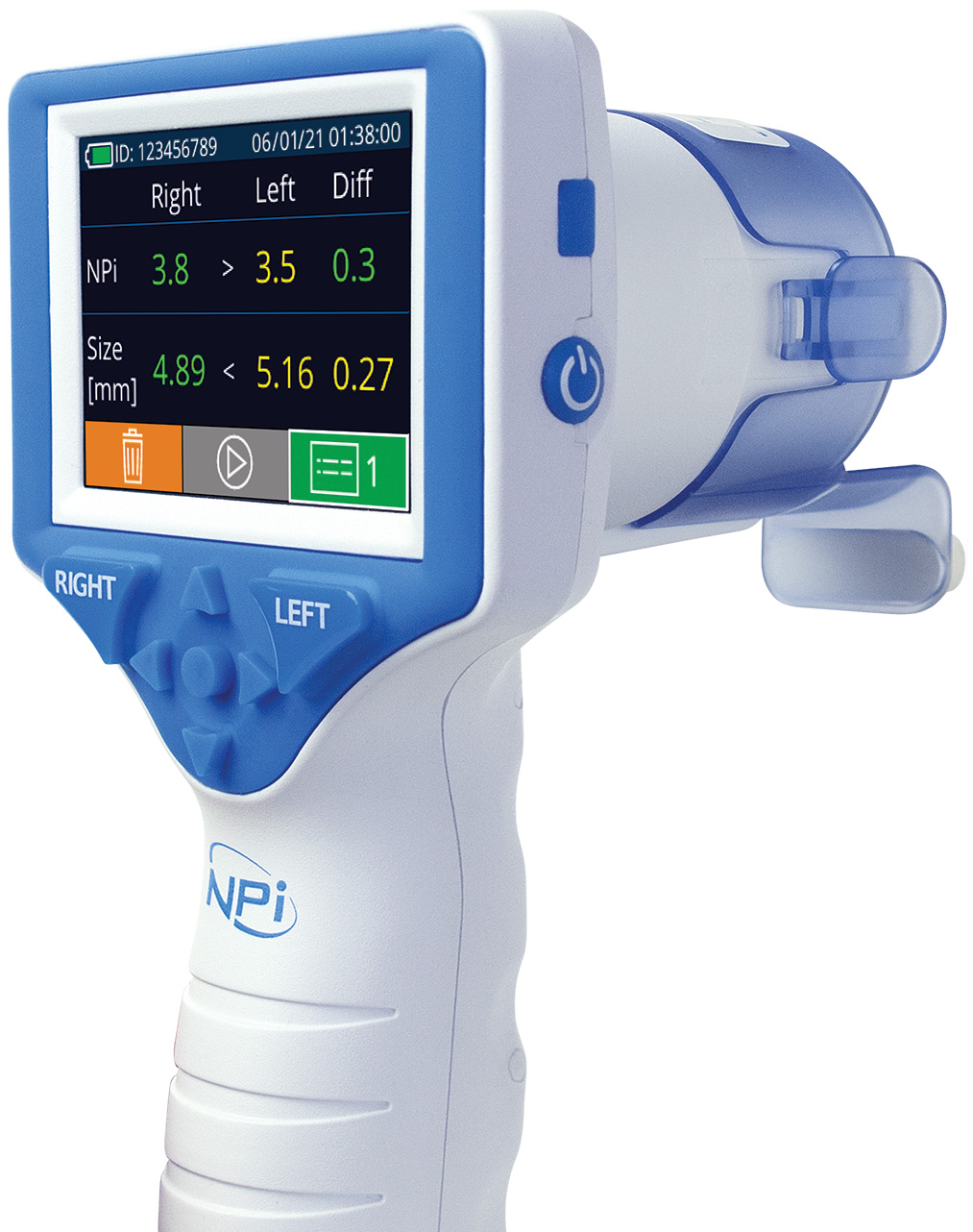Trending Pupil Size and Reactivity in the Neurocritical Care Patient
The NeurOptics® NPi® Pupillometer is a hand-held, cordless and easy-to-use quantitative infrared device which provides completely accurate, reliable and objective pupil size and reactivity data independent of examiner.
The NPi®-300 Pupillometer:
- Provides accurate, reliable and objective pupillary response measurement for both size and reactivity
- Monitors and trends changes in pupillary response over time
- Combines an infrared camera, processor and LED light source in a simple, handheld device
- Requires no calibration by the user
Why measure the pupils of a critically injured or ill patient?
Frequent pupil evaluation is part of the protocol for care of the critically injured or ill patient. The pupillary light reflex (PLR) and pupil size have traditionally been used as a clinical parameter and as a prognostic indicator. The Brain Trauma Foundation and the American Association of Neurological Surgeons recommends that pupillary light reflex for each eye should be used as a prognostic parameter and that the duration of pupillary dilation and fixation should be documented.
How is this measurement currently taken?
This assessment is currently performed by clinicians manually using a penlight and pupil gauge (Haab scale) which is a very subjective and qualitative measurement. In addition to critically ill or injured patients, the pupillometer can be used to facilitate measurement of pupil dynamics on patients who are on drugs (whether it be a drug overdose or morphine prescribed by doctors for pain related to the initial trauma.) In this case, the pupils are very constricted (a phenomenon known as “pin-point pupils”) and it is difficult, if not impossible, to measure pupil dynamics with the naked eye.
Clinical Concepts in Pupil Assessment
Pupillometry references
Follow this link for Pupillometry research and reference materials

